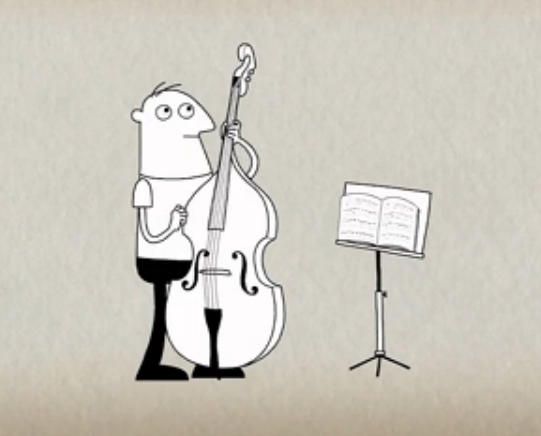Did you know that every time musicians pick up their instruments, there are fireworks going off all over their brain?
知道每當音樂家彈奏他們的樂器時,他們腦里是到處在施放煙火嗎?
On the outside, they may look calm and focused, reading the music and making the precise and practiced movements required.
由外表看來,他們很冷靜、專注看著樂譜,做出所需的準確和熟練動作。
But inside their brains, there's a party going on.
但他們的腦里正開著一個派對。
How do we know this?
我們怎么會知道呢?
Well, in the last few decades, neuroscientists have made enormous breakthroughs in understanding how our brains work
在過去的幾十年中,神經科學家對理解腦功能有了巨大的突破,
by monitoring them in real time with instruments like fMRI and PET scanners.
功歸于能即時監(jiān)測腦功能的儀器,例如功能性磁振造影(fMRI) 、正電子發(fā)射計算機斷層掃描儀(PET)。

When people are hooked up to these machines, tasks, such as reading or doing math problems, each have corresponding areas of the brain where activity can be observed.
這些儀器掃描顯示閱讀、做數(shù)學題等行為引起腦內相應的活動區(qū)域。
But when researchers got the participants to listen to music, they saw fireworks.
但給研究參與者聽音樂時神經學家看到了煙火。
Multiple areas of their brains were lighting up at once, as they processed the sound, took it apart to understand elements like melody and rhythm,
處理聲音的同時腦里多處同時亮起,將其分解成旋律、節(jié)奏等元素,
and then put it all back together into unified musical experience.
而后再重新組合成一個完整的音樂體驗。
And our brains do all this work in the split second between when we first hear the music and when our foot starts to tap along.
這些大腦運作發(fā)生在聽到音樂和腳開始打節(jié)拍的一瞬間。
But when scientists turned from observing the brains of music listeners to those of musicians, the little backyard fireworks became a jubilee.
而當科學家由觀察聆聽者的大腦轉至音樂家的大腦,后院的小煙火變成了喜年慶典煙火。
It turns out that while listening to music engages the brain in some pretty interesting activities, playing music is the brain's equivalent of a full-body workout.
事實證明,聽音樂時大腦忙碌于一些很有趣的活動,而彈奏音樂是相當于大腦的全身鍛煉。












